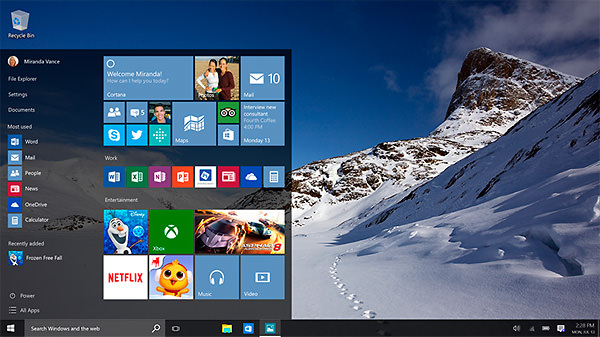Drastic change in the course of the weekend for Microsoft, which announced the new policy compatibility with hardware architectures for their operating systems.
During the end week Microsoft published some changes in the support strategies for older platforms. Previously the company was known to ensure full compatibility on all platforms in the long term, and that is why the news of the last few days have been quite surprising. Intel launched in August its latest generation of Core processors, the sixth under the name Skylake, who has never received strong support on Windows 7 which was the case, for example of Windows 10.
It is not strange that some features such as Speed Shift will never be compatible with Windows 7, but Microsoft ads go well beyond, with all the new processors will be supported exclusively on the latest released operating system, Windows 10. Skylake will be supported only of a specific list of selected devices, but also about this support will be guaranteed only for 18 months. For those who are about to buy a PC today will not be a big problem, now that all systems, or nearly, are already equipped with Windows 10.
It will instead be for companies, whose working methods often force employees to remain anchored to a specific version of the operating system compatibility problems with your software. Windows XP was a prime example in this, with the changes in the licensing system and Windows Vista drivers and following that made many essentially useless enterprises to use software on new software platforms. With the new Microsoft strategy is probably avoided that the phenomenon is repeated with Windows 7.
According to the active policies previously, users could use Windows 7 until January 14, 2020 with full support from Microsoft, and Windows 8.1 until 10 January 2023. Companies that had struggled to move from Windows XP to Windows 7. In short, they still had a few years earlier to prepare updated environment systems, after several expected to abandon permanently Windows XP. In this perspective, the compulsion to move to the new operating system within 18 months could also be detrimental.
The all-clear support from Microsoft does not spell the definitive end of Windows 7 in the summer of 2017, but if Microsoft’s operating system, the most widely used at the time of this writing, it cannot be run on newly developed CPU could record a considerable drop in sales of new hardware, a certain category not positive in terms of sales in recent quarters. If companies are not ready to move to Windows 10, they may be left willingly anchored to old hardware hitting consequently, the PC market.
According to the post published on behalf of Terry Myerson, Microsoft Windows 10 will be the only operating system supported by the next architecture Kaby Lake to 14-nm Intel, Qualcomm Snapdragon 820 and AMD Carrizo. After the expiry of 18 months, the computers selected in the list of supported receive security updates, but will not receive updates specific to the platform if you will reflexively problems to other configurations. These are updates that are usually provided by the motherboard manufacturer in collaboration with Intel or AMD, and it is rather strange effects that the announcement has come in this case from Microsoft.

